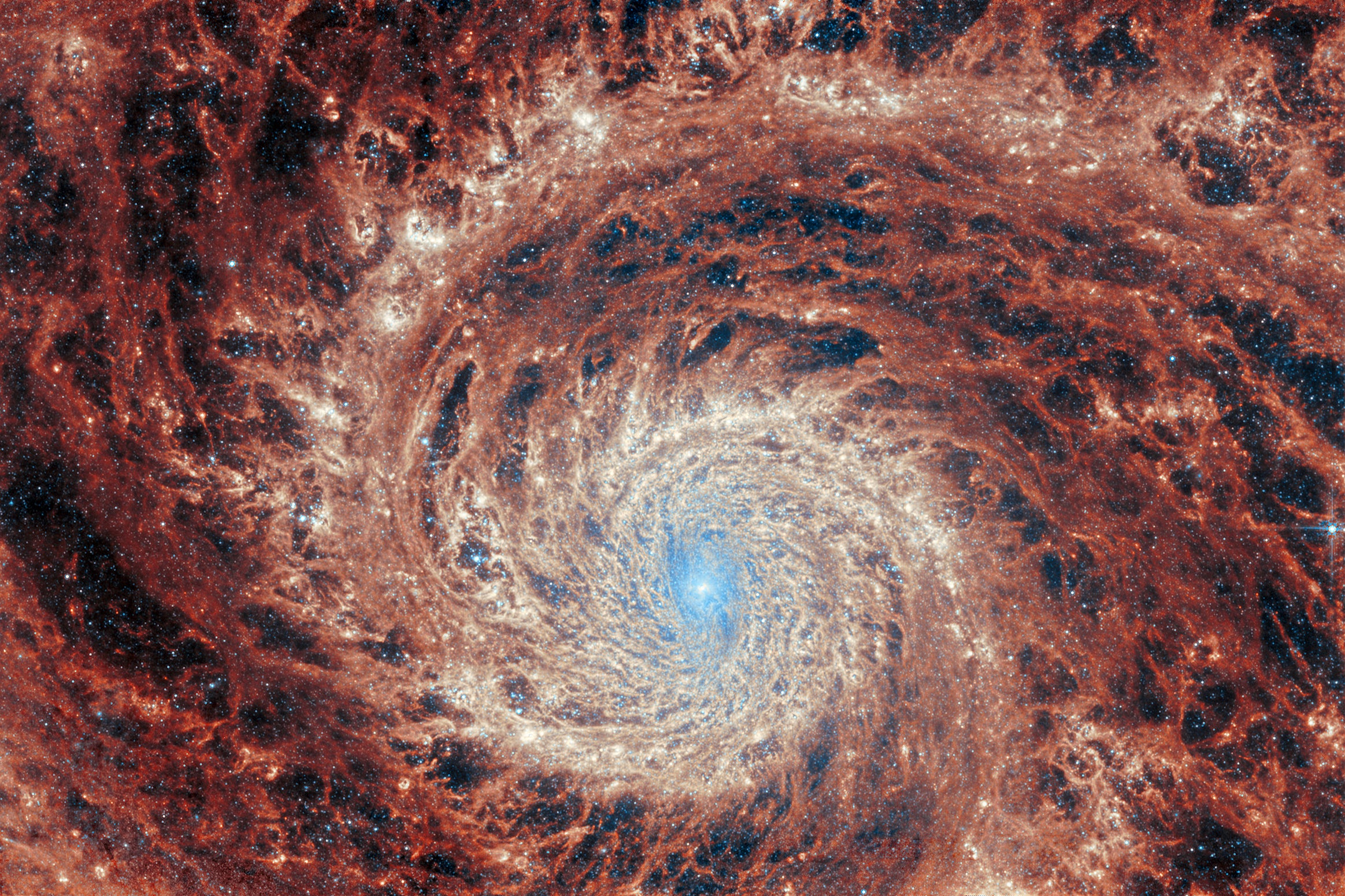Science
Related: About this forumBehold--the Best Space Images of 2023
DECEMBER 29, 2023
11 MIN READ
This year’s most interesting space images include infrared views of galactic “bones,” an asteroid’s double moon, Jupiter’s giant polar vortex, and more
BY PHIL PLAIT

Credit: ESA/Webb, NASA & CSA, A. Adamo (Stockholm University) and the FEAST JWST team
The year 2023, like every other one before it—and, no doubt, every year to come—has had its crests of good news and its troughs of bad tidings. But one constant, reliable source of awe and beauty is the sky over our head. After journeys of mere seconds to billions of years, the light from astronomical objects in the cosmos rains down on all of us, and scientists have patiently photographed some of it to better understand the universe in which we live.
And every year we see new things, or old things in new ways, and I’ve been set the wonderful task of selecting my favorites and relaying them and their import to you. End-of-year lists, especially those displaying astronomical imagery, tend to be splashy and colorful. That’s understandable, but what they sometimes miss are the more subtle photographs, those that hide momentous discoveries in minor visual details or offer fresh perspectives on familiar objects. They may not leap off the page, but they still have an impact.
That’s what I’ve kept in mind while sorting through this year’s celestial treasure trove. This gallery is by no means complete, but it shows what I think are some of the most interesting astronomical portraits to have emerged in 2023.The Macabre Glow of Galactic BonesNo gallery such as this would be complete without something from the James Webb Space Telescope (JWST), our newest infrared eye on the sky. This monster observatory has already brought so many small revolutions to astronomy that picking one from the past year is no small task. Should it be a baby star throwing an immense tantrum or a massive old star shedding material at colossal rates before it inevitably explodes as a supernova? Or should it be a map of a mind-stomping 100,000 galaxies?
Well, how about something very, very different—such as the skeletal structure of a nearby galaxy’s intricate web of dust (as seen in the opening image above)?
Messier 51 (M51) is a spiral galaxy about 30 million light-years away that is face-on when viewed from Earth. A favorite of amateur and professional astronomers, it has a beautiful spiral structure and shows the effects of a smaller galaxy colliding with it. In the phenomenally sharp and decidedly eerie false-color view from JWST’s Mid-Infrared Instrument, shown above, we see countless clouds of cosmic dust in a skeletonlike pattern. Each of these clouds is made up of small grains of rocky and sooty carbon-based molecules expelled by dying stars. M51’s rotational motion combines with its complex gravitational field to sculpt these collective dust clouds into interconnected whorls; red areas show regions where dust is warmed by starlight, and yellow hues denote sites of active star formation. Astronomers captured this image to better understand how stars are born in stellar nurseries and how they evolve over time."
More:
https://www.scientificamerican.com/article/behold-the-best-space-images-of-2023/
erronis
(16,829 posts)There are some incredible shots here. So much more to learn about our universe - and perhaps so little time.